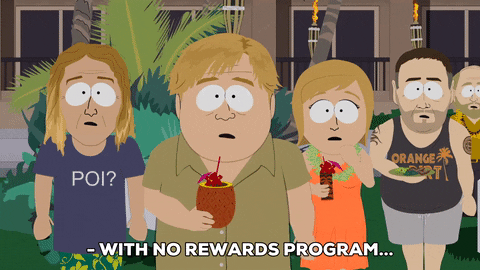To effectively engage with your customers, you must first take the time to understand who they are. This involves delving into their demographics, preferences, and behaviors. By gathering data through surveys, social media interactions, and purchase histories, you can create a comprehensive profile of your target audience.
This understanding allows you to tailor your marketing strategies and offerings to meet their specific needs and desires. When you know what drives your customers, you can create more personalized experiences that resonate with them on a deeper level.
However, understanding your customer base goes beyond just collecting data; it requires active listening and engagement. Pay attention to feedback, both positive and negative. It provides in-depth insight into what your customers value most. Engaging with them through various channels—be it social media, email newsletters, or in-person events—can help you gauge their sentiments and preferences. By fostering a two-way communication channel, you not only gain insights but also build trust and loyalty among your customers.
Click to contact Teracore to assist with your loyalty program >
Key Takeaways
- Understand your customer base by conducting thorough market research and gathering insights into their preferences, behaviors, and needs.
- Set clear and attainable goals for your loyalty program, such as increasing customer retention, driving repeat purchases, and boosting overall customer satisfaction.
- Offer relevant and valuable rewards that align with your customers’ interests and provide meaningful incentives for their loyalty.
- Provide a seamless user experience by ensuring that your loyalty program is easy to navigate, user-friendly, and integrated across all touchpoints.
- Communicate effectively with your customers by utilizing various channels to keep them informed, engaged, and excited about your loyalty program.
Setting Clear and Attainable Goals
Once you have a solid grasp of your customer base, the next step is to set clear and attainable goals for your business. These goals should be specific, measurable, achievable, relevant, and time-bound (SMART). By defining what success looks like for your organization, you can create a roadmap that guides your efforts and keeps you focused.
Whether your aim is to increase sales by a certain percentage, expand your customer base, or enhance customer satisfaction, having clear objectives will help you allocate resources effectively, as well as track your progress. In addition to setting overarching goals, break them down into smaller milestones. This approach makes the objectives feel more manageable, and allows you to celebrate small wins along the way.
Each milestone achieved can serve as motivation for you and your team, reinforcing the belief that you are moving in the right direction. Regularly revisiting these goals ensures that they remain relevant and aligned with your evolving business landscape.
Offering Relevant and Valuable Rewards

To keep your customers engaged and loyal, offer rewards that are both relevant and valuable to them. This could range from discounts on future purchases, to exclusive access to new products or services. The key is to ensure that the rewards resonate with your audience’s interests and needs.
Conducting surveys or analyzing purchasing patterns can help you identify what types of rewards would be most appealing to your customers. By implementing a tiered rewards system you can encourage continued engagement.
For instance, customers who reach certain spending thresholds could unlock higher levels of rewards or exclusive benefits. This incentivizes repeat purchases and fosters a sense of achievement among your customers. When they feel valued and recognized for their loyalty, they are more likely to remain committed to your brand.
Click to contact Teracore to assist with your loyalty program >
Providing a Seamless User Experience
From the moment your visitors land on your website or app, every interaction should be intuitive and enjoyable. This means ensuring that your website is easy to navigate, with clear calls to action and a streamlined checkout process.
If customers encounter obstacles or frustrations while trying to engage with your brand, they are likely to abandon their efforts and seek alternatives. Remember the importance of mobile optimization in delivering a seamless experience. With an increasing number of consumers using their smartphones for shopping and browsing, your platform must be mobile-friendly.
A responsive design that adapts to various screen sizes can significantly enhance user satisfaction. Additionally, providing multiple payment options can cater to diverse customer preferences, making it easier for them to complete their transactions without hassle.
Communicating Effectively with Your Customers
Effective communication is at the heart of any successful customer relationship. Keep your customers informed about new products, promotions, and updates while being responsive to their inquiries and feedback. Utilizing various communication channels—such as email newsletters, social media platforms, and chatbots—can help you reach your audience where they are most active. Tailoring your messaging to suit each platform can enhance engagement and make sure that your communications resonate with your audience.
Furthermore, transparency is key in building trust with your customers. Be open about any changes in policies, pricing, or product availability. If issues arise—such as delays in shipping or product recalls—communicate these challenges promptly and honestly. Use a crisis as an opportunity to impress! Customers appreciate brands that take accountability and keep them informed. By fostering an open line of communication, you enhance customer satisfaction and create a loyal community that feels valued and heard.
Monitoring and Analyzing Program Performance
To ensure the success of your initiatives, monitor and analyze program performance regularly. This involves tracking key performance indicators (KPIs) that align with your goals—such as customer retention rates, engagement levels, and sales figures. By analyzing this data, you can gain insights into what’s working well and what may need adjustment.
Regularly reviewing performance metrics allows you to make informed decisions that drive continuous improvement. In addition to quantitative data, consider gathering qualitative feedback from customers about their experiences with your programs. This could involve conducting interviews or focus groups to gain deeper insights into their perceptions and suggestions for improvement.
Combining both quantitative and qualitative data will provide a holistic view of your program’s effectiveness and help you identify areas for enhancement.
Click to contact Teracore to assist with your loyalty program >
Adapting and Evolving Your Program Over Time
The business environment is constantly changing, and so are customer preferences. To remain relevant and competitive, it’s essential to adapt and evolve your programs over time. This means being open to feedback and willing to make changes, based on what you learn from monitoring performance and engaging with customers.
Regularly reassessing your goals and strategies ensures that they align with current market trends and customer expectations. Don’t be afriad to experiment with new ideas or initiatives. This could involve testing different types of rewards, launching new marketing campaigns, or exploring innovative technologies that improve user experience. By fostering a culture of experimentation within your organization, you can stay ahead of the curve and continuously meet the evolving needs of your customers.
Building a Strong Brand Community
One of the most powerful ways to foster loyalty among your customers is by building a strong brand community. This involves creating spaces—both online and offline—where customers can connect with each other and share their experiences with your brand. Social media groups, forums, or even in-person events, can serve as platforms for customers to engage with one another while interacting with your brand.
Encouraging user-generated content is another effective way to strengthen this community bond. When customers share their stories or experiences related to your products or services, it enhances their connection with your brand and serves as authentic testimonials for potential new customers. By nurturing this sense of community, you create an environment where customers feel valued and invested in your brand’s success.
Conclusion
In conclusion, understanding your customer base is the foundation upon which all successful strategies are built. By setting clear goals, offering valuable rewards, providing seamless experiences, communicating effectively, monitoring performance, adapting over time, and building a strong community, you can cultivate lasting relationships with your customers that drive loyalty and growth for your business.
When designing a loyalty program, it is important to consider security measures to protect customer data. One related article that provides valuable insights on enhancing security is 7 WordPress Security Hardening Tips. Implementing these tips can help ensure that customer information is safeguarded while they participate in the loyalty program. By prioritizing security measures, businesses can encourage continued engagement with the program.
Contact Teracore to assist with your loyalty program >
FAQs
What is a loyalty program?
A loyalty program is a marketing strategy designed to encourage customers to continue to shop at or use the services of a business by offering them rewards or incentives for their repeat business.
What are the benefits of a loyalty program for businesses?
Loyalty programs can help businesses increase customer retention, encourage repeat purchases, gather valuable customer data, and create a sense of brand loyalty among their customer base.
What are the different types of loyalty programs?
There are various types of loyalty programs, including points-based programs, tiered programs, cashback programs, coalition programs, and non-monetary programs such as experiential rewards or access-based rewards.
How can businesses design an effective loyalty program?
Businesses can design an effective loyalty program by clearly defining their objectives, understanding their target audience, offering valuable rewards, making the program easy to understand and use, and continuously evaluating and improving the program based on customer feedback and data analysis.
What are some examples of successful loyalty programs?
Examples of successful loyalty programs include Starbucks Rewards, Amazon Prime, Sephora Beauty Insider, and airline frequent flyer programs such as Delta SkyMiles and United MileagePlus.




